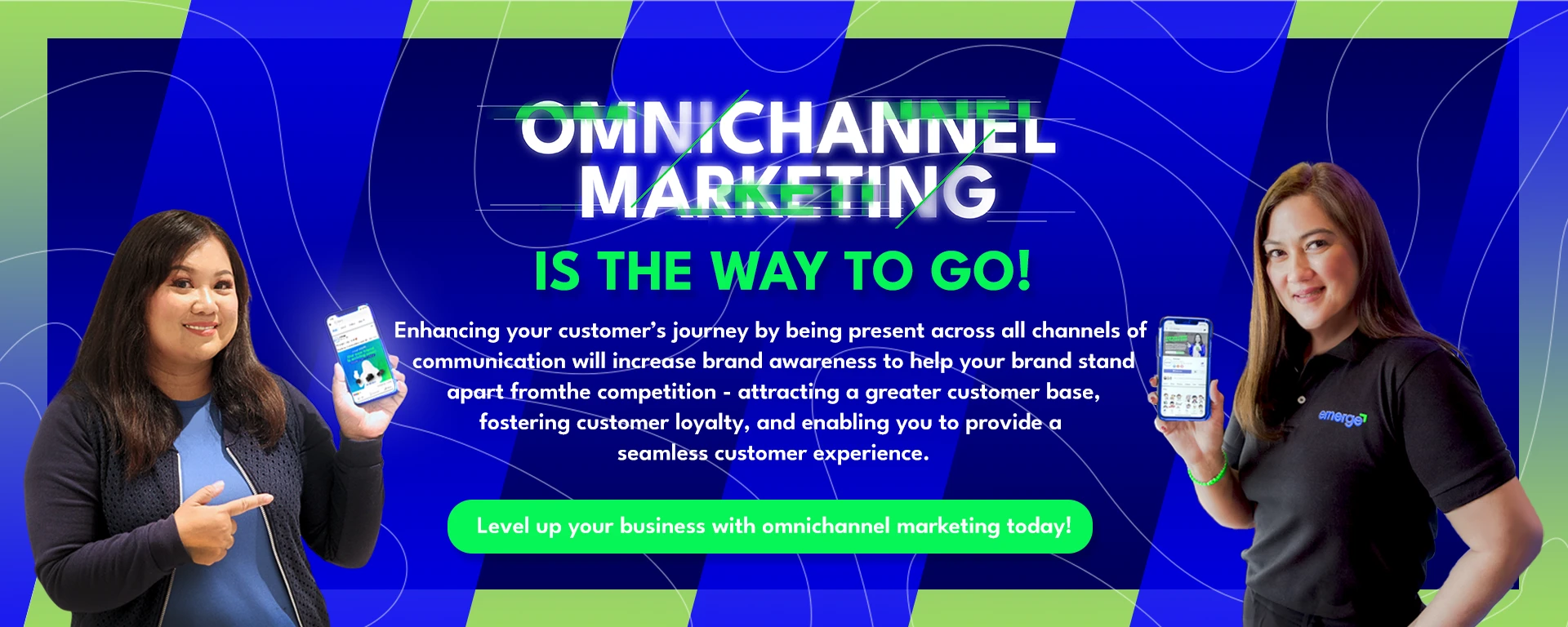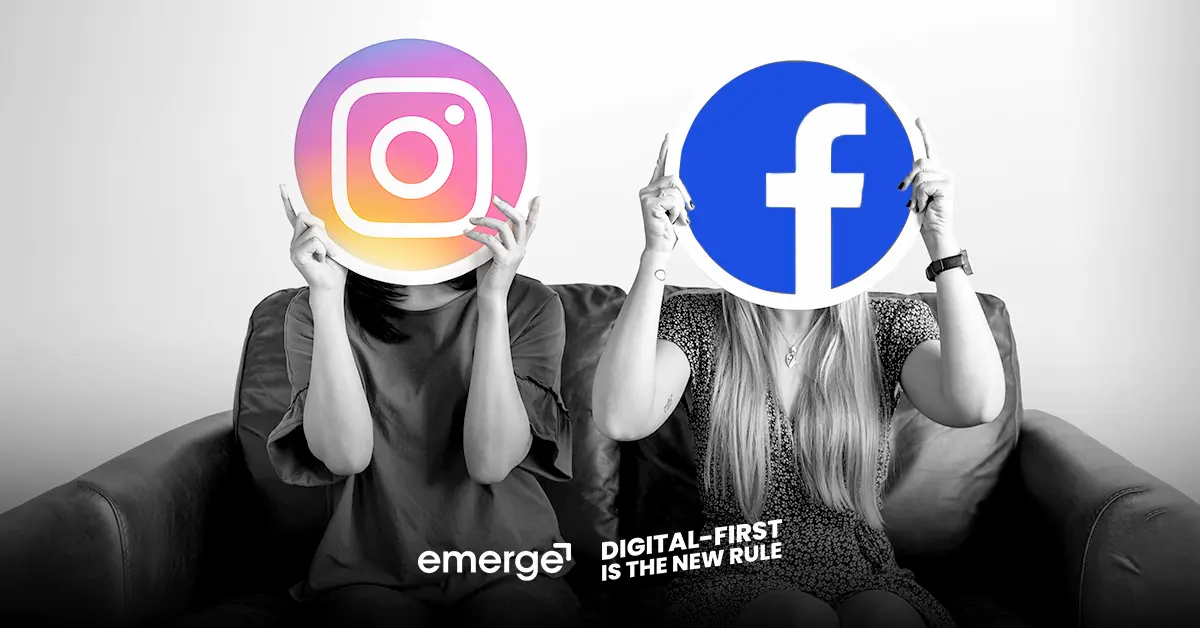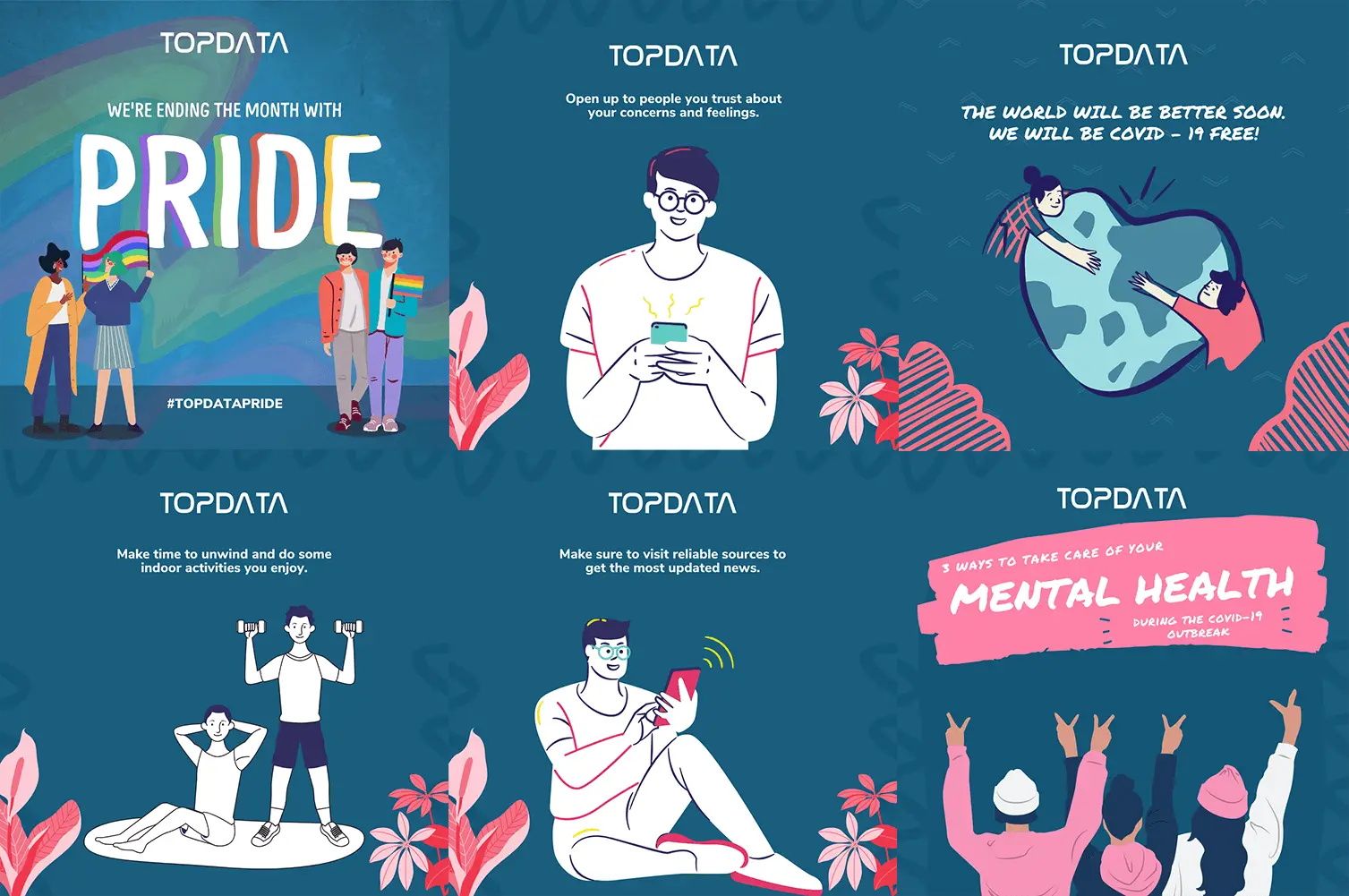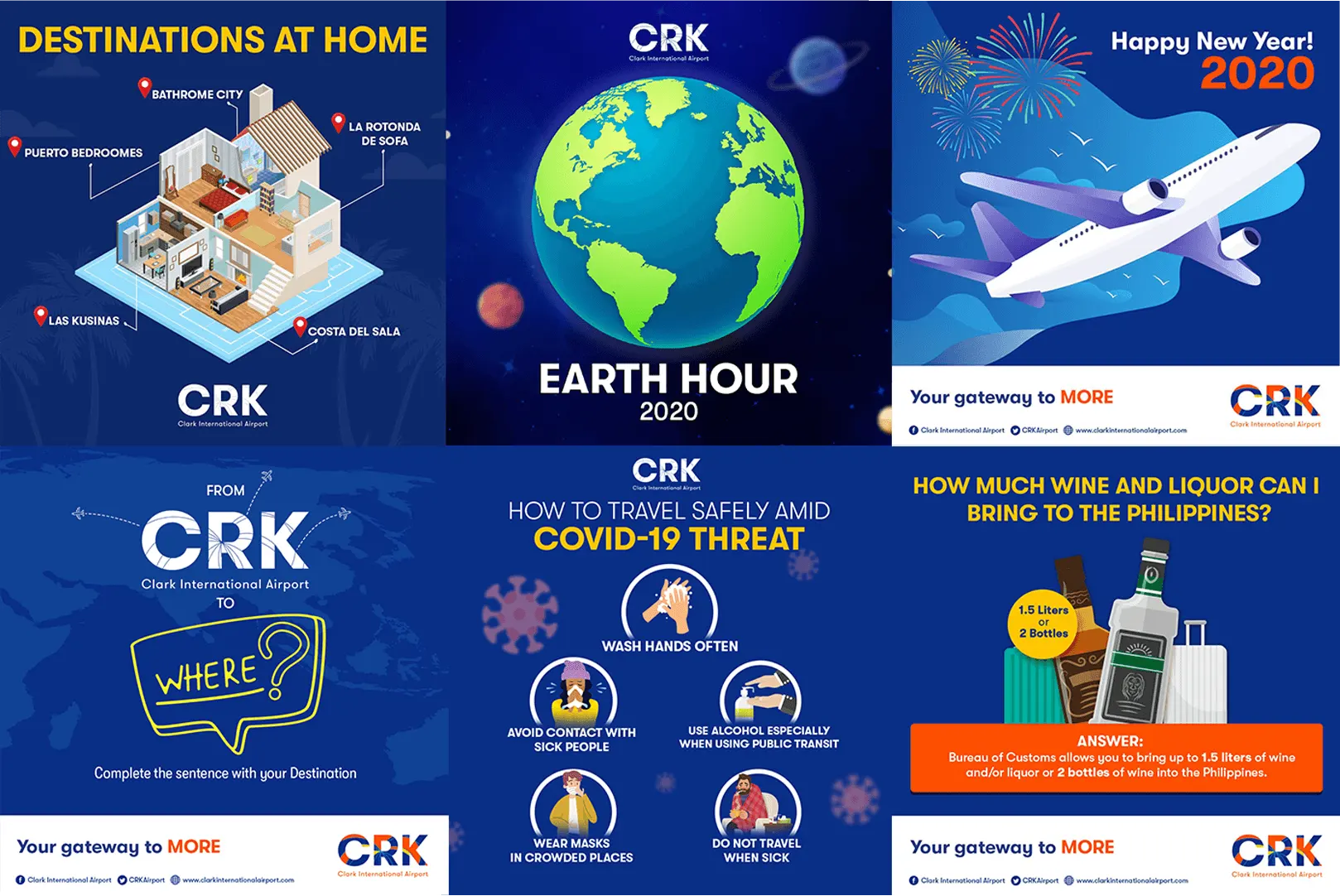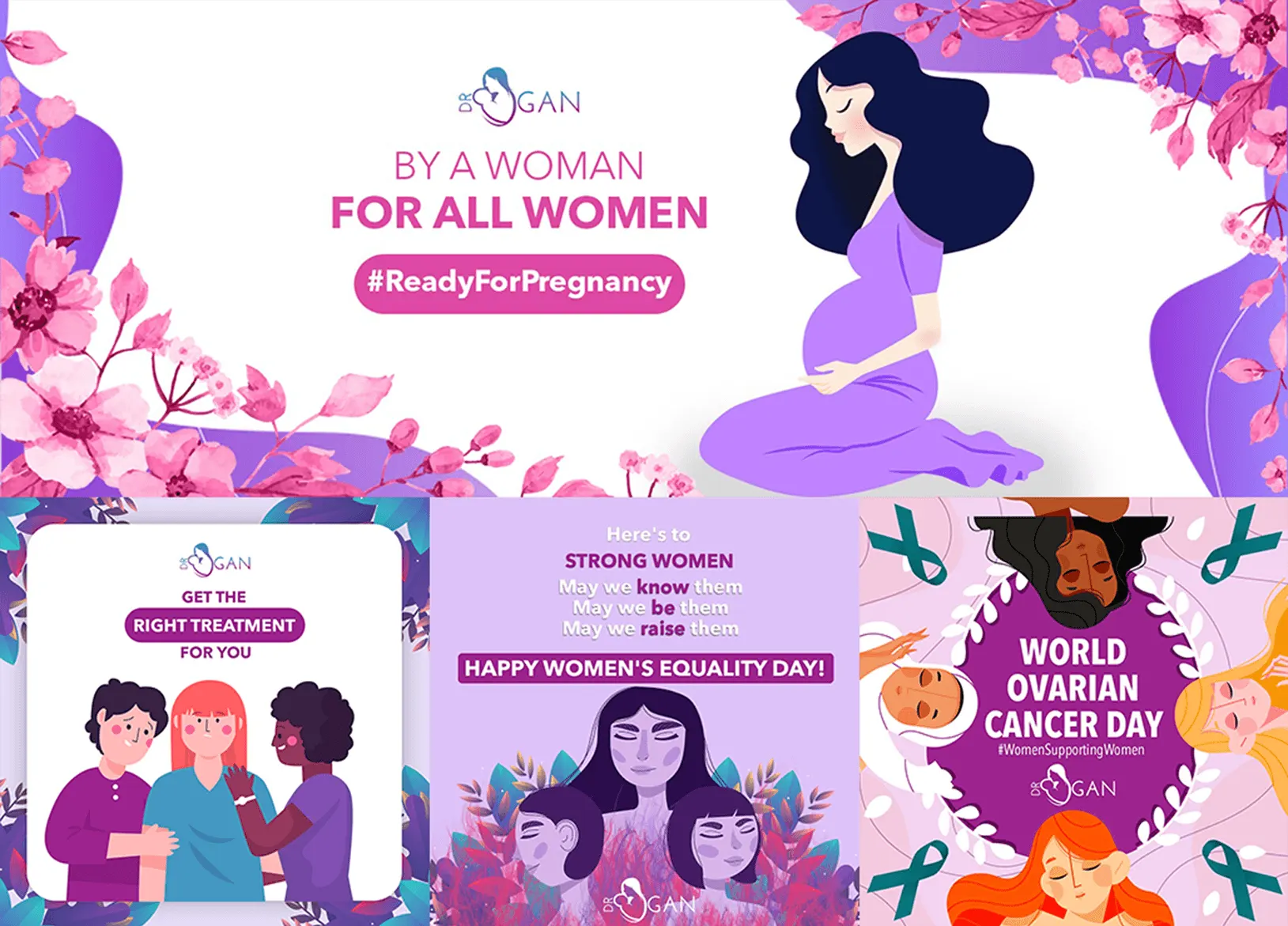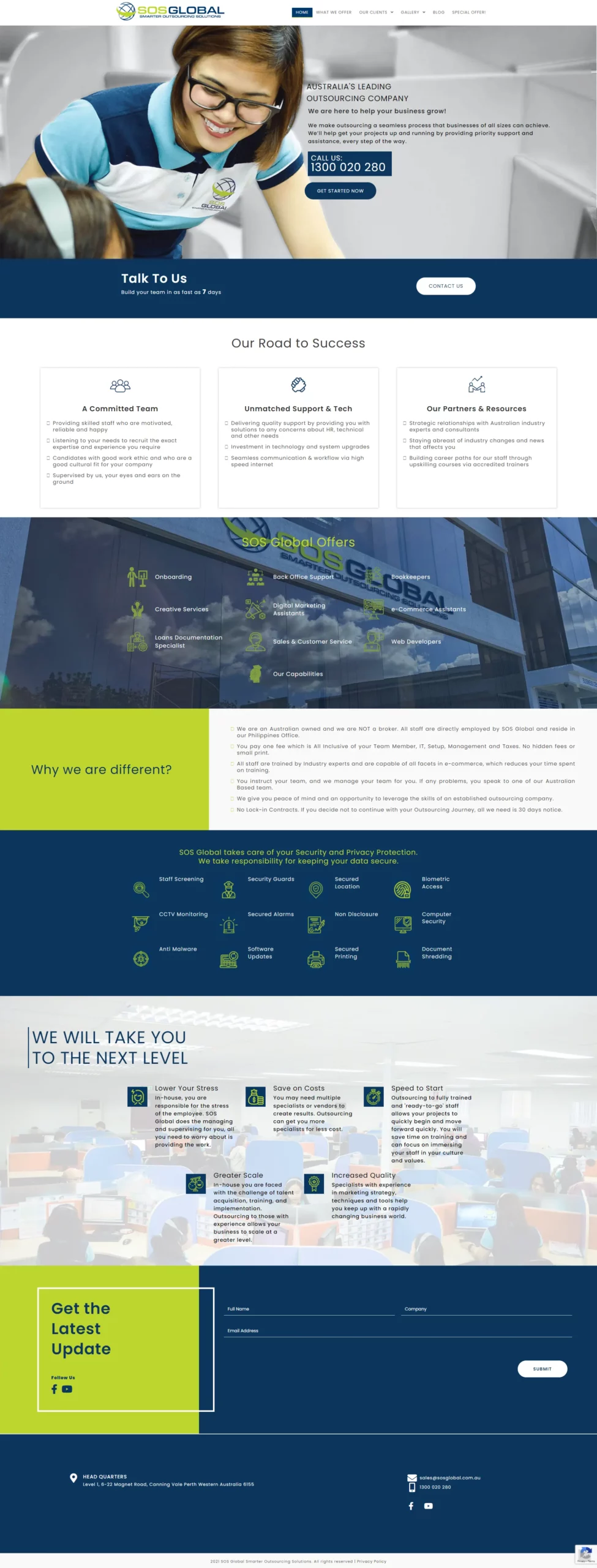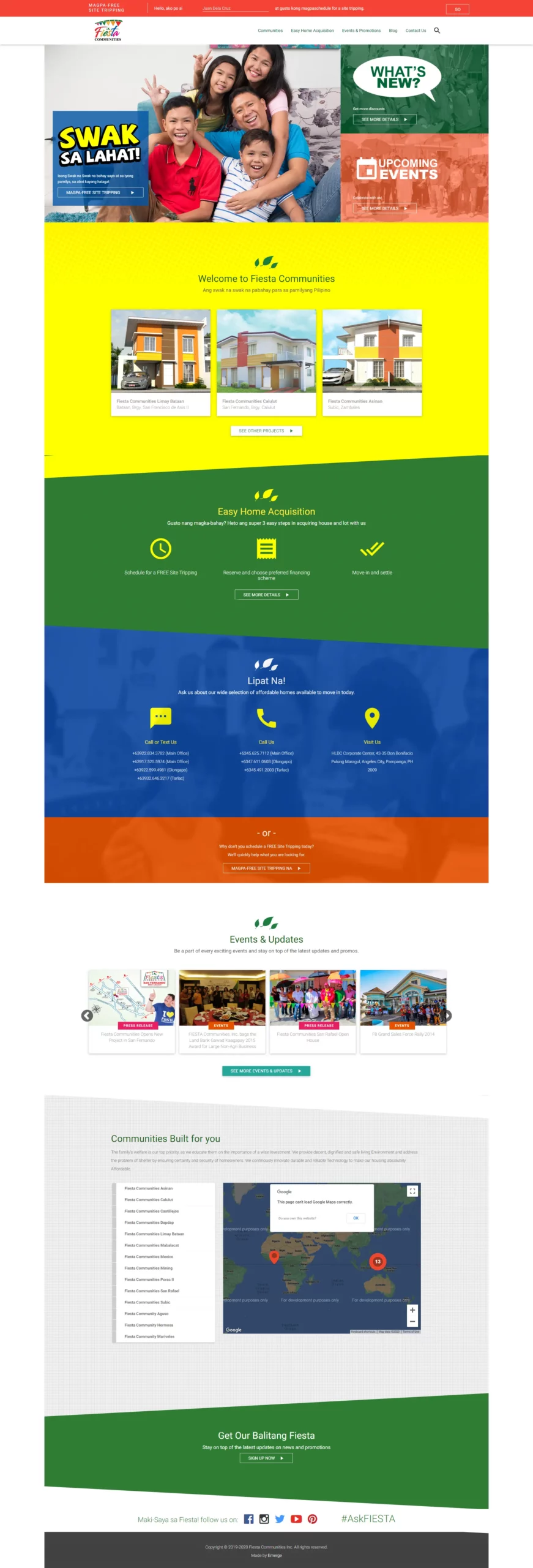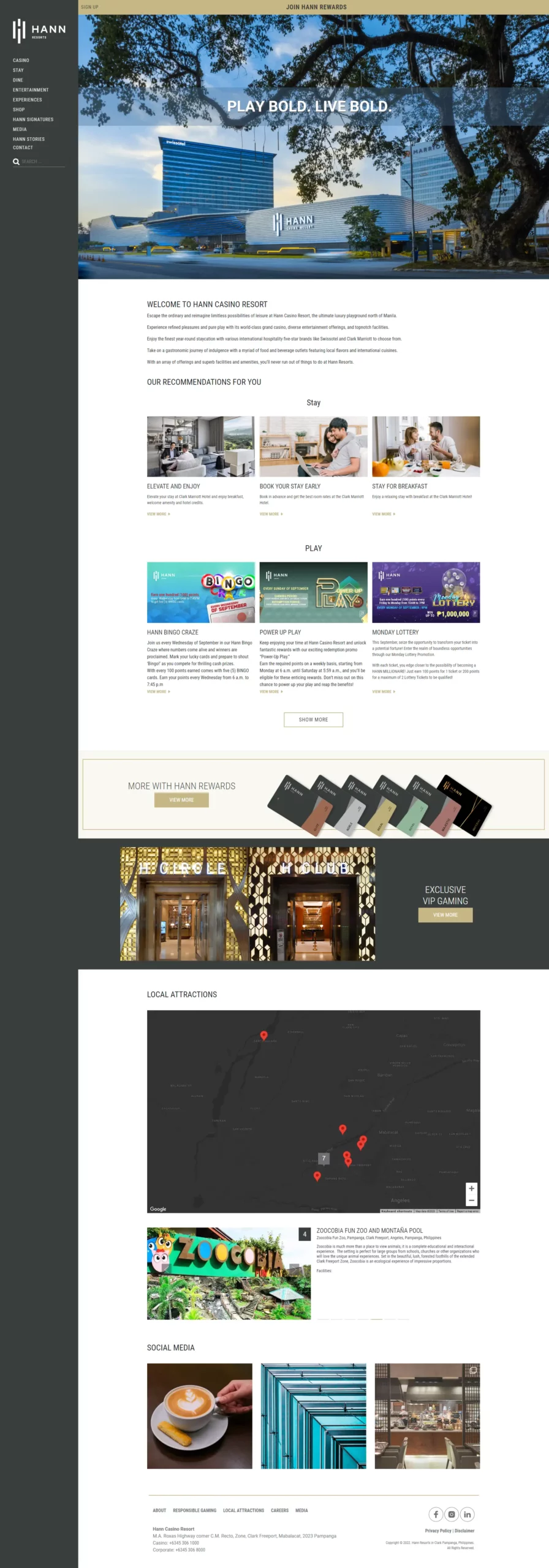Facebook Ads vs. Instagram Ads: Which Platform Yields Better Campaign Results?
Facebook vs Instagram— Even though both are owned by the same company when it comes to choosing between Facebook ads and Instagram ads, marketers often find themselves at a crossroads.
In today’s digital era, social media advertising plays a vital role in the marketing strategies of businesses aiming to effectively engage with their target audience. With billions of active users, Facebook and Instagram have emerged as powerful platforms for running advertising campaigns.
In this blog, we will explore the key differences between these two and analyze which one is more likely to yield better campaign results.
Facebook Ads vs Instagram Ads: Background

Instagram and Facebook are widely recognized as two of the most popular social networking sites. They differ in their origins and the goals they initially set out to achieve. Instagram, founded in 2010 by Kevin Systrom and Mike Krieger, emerged as a mobile-focused platform that capitalized on the rising prominence of smartphones. In contrast, Facebook, established earlier in 2004 by Mark Zuckerberg, Eduardo Saverin, and Dustin Moskovitz, originated as a website.
In April 2012, Facebook executed its largest acquisition to date, acquiring Instagram for approximately $1 billion. This strategic move allowed Facebook to establish a strong presence in the mobile industry by integrating the already popular photo-sharing app into its portfolio. Despite the visual similarity between the logos of Instagram and Facebook, with both featuring a white accent, the two platforms emit distinct vibes and cater to different user experiences.
The fundamental disparity between Instagram and Facebook stems from their respective objectives and the environments in which they were launched. Instagram’s primary focus revolved around capturing and sharing moments, capitalizing on the notion of sharing visual stories and fostering creativity. On the other hand, Facebook’s tagline emphasized the concept of moving fast together, highlighting the platform’s aim to connect people, share content, and facilitate social interactions.
Audience Reach and Demographics
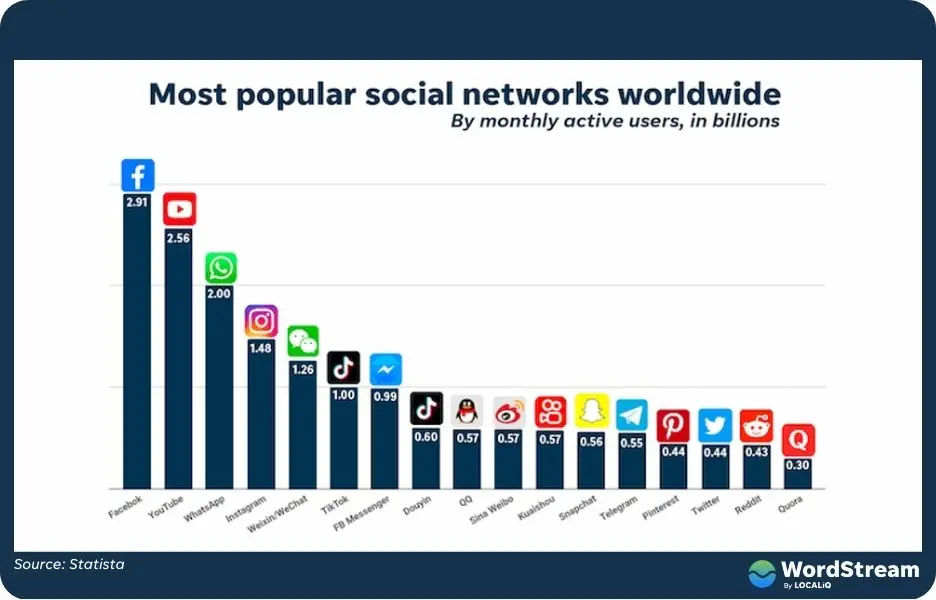
One of the crucial factors to consider when selecting a social media advertising platform is the reach and demographics of its user base.
Facebook demographics and usage
- Number of monthly active users: 2.963 billion
- Largest age group: 25-34 (29.9%)
- Gender: 44% female, 56% male
- Time spent per day: 30 minutes

Facebook boasts over 2.9 billion monthly active users, making it the largest social media platform worldwide. It caters to a wide range of age groups and interests, offering advertisers a vast pool of potential customers.
Instagram demographics and usage
- Number of monthly active users: 2 billion other reports cite 1.35 billion
- Largest age group: 18-24 (30.8%)
- Gender: 48.2% female, 51.8% male
- Time spent per day: 30.1 minutes
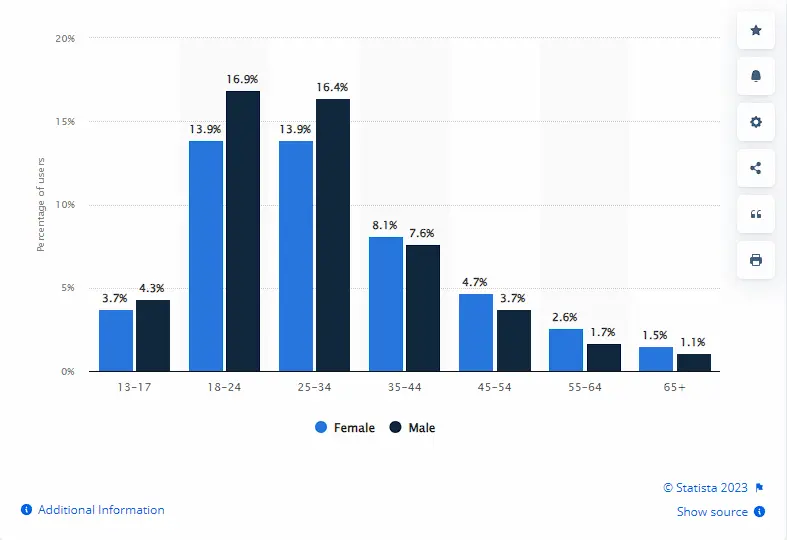
On the other hand, Instagram has around 1.2 billion monthly active users, with a focus on younger demographics, particularly those under the age of 35.
Depending on your target audience, understanding these demographic differences is essential for determining the right platform for your advertising campaign.
Ad Formats and Visual Appeal
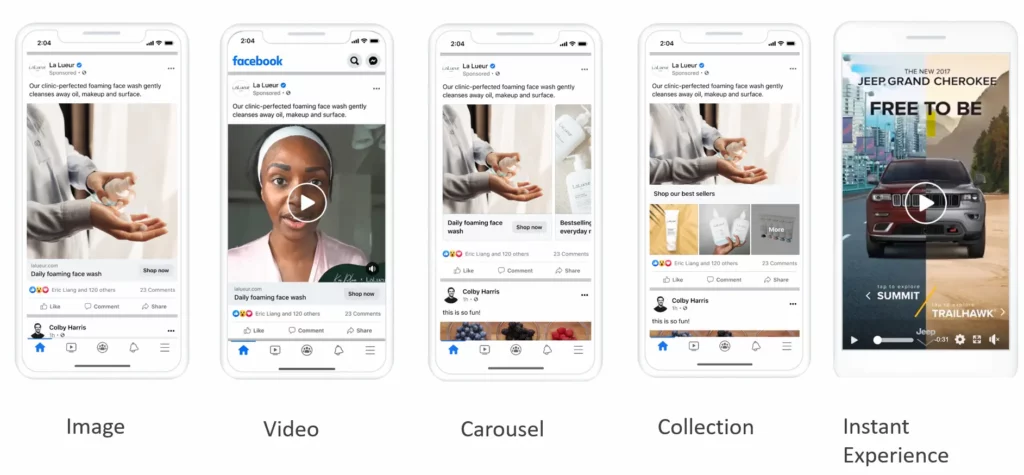
Facebook and Instagram differ significantly in terms of ad formats and visual appeal. Facebook Ads allow for a diverse range of ad types, including image ads, video ads, carousel ads, and more. These ads appear in users’ news feeds and sidebar, blending seamlessly with the platform’s content. For “lower funnel” strategies, particularly those related to e-commerce or conversion-oriented campaigns that involve transactions on external sites, Facebook is a more suitable platform to concentrate efforts.
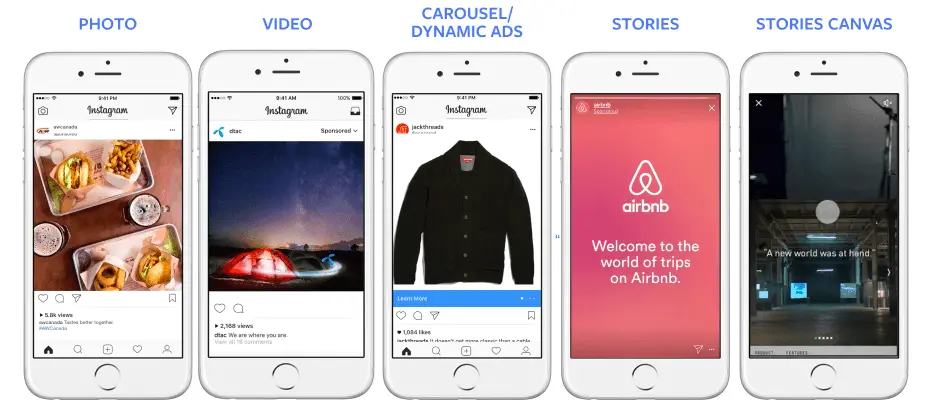
In contrast, Instagram Ads are known for their visually captivating essence, as the platform strongly emphasizes visual content such as images and videos. With various ad formats available, including photo ads, video ads, carousel ads, and story ads, Instagram offers advertisers an engaging and visually immersive platform. While Instagram continues to enhance its advertising capabilities, including features related to e-commerce, its primary appeal lies in being a destination for users seeking inspiration and exploring ideas, rather than primarily focusing on direct transactions.
Depending on your campaign objectives and the nature of your products or services, choosing the right ad format and visual style can make a significant impact on your campaign’s success.
User Engagement and Interaction
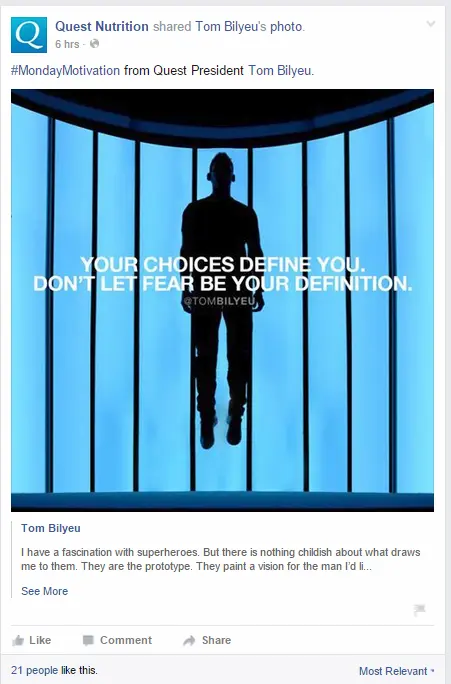

Measuring the effectiveness of social media advertising campaigns relies heavily on engagement metrics. Facebook provides a range of engagement options, including likes, comments, and shares, which can significantly enhance brand visibility and expand the reach of an ad. Moreover, Facebook’s extensive targeting capabilities enable advertisers to customize their campaigns based on specific user interests and behaviors, optimizing the effectiveness of their ads.
On the other hand, Instagram’s focus on visually-driven content cultivates a conducive environment for fostering high levels of engagement. The platform offers similar engagement features like likes, comments, and shares. Additionally, Instagram Stories provide an interactive “swipe up” option, enabling users to be directed straight to a website or landing page, further enhancing engagement and potential conversions.
In terms of key metrics, engagement stands out as a major advantage for Instagram over Facebook. According to a study on social media engagement, brands experience a median engagement rate of 0.09% per Facebook post, whereas, on Instagram, the median engagement rate per post reaches 1.60%. These figures highlight a significant difference between the two platforms when it comes to measuring the effectiveness of campaigns.
To achieve the best outcomes it is crucial to understand the unique engagement patterns and user behavior on each platform. By tailoring strategies to leverage the engagement features and preferences of Facebook and Instagram users, advertisers can maximize the results of their campaigns.
Analytics, Cost, and Return on Investment (ROI):
The cost of advertising on both platforms can vary depending on multiple factors. Facebook has a larger user base and offers a wider reach, which can result in higher competition and potentially higher costs per click or impression. The cost of Facebook ads is influenced by factors such as audience targeting, ad placement, and campaign objectives. However, Facebook provides advanced analytics tools that allow marketers to track campaign performance effectively. This data-driven approach enables advertisers to gather valuable insights and make data-informed decisions to optimize their strategies and achieve better results.
On the other hand, Instagram’s platform is known for its visually appealing format and younger user demographic. This can present cost-effective opportunities for certain industries or campaigns. The visually-driven nature of Instagram makes it particularly suitable for industries such as fashion, beauty, travel, and lifestyle. Marketers can leverage the platform’s creative features to engage users and drive higher levels of brand awareness and engagement. However, Instagram’s analytics tools may be slightly less robust compared to Facebook.
Determining the advertising budget and analyzing the potential return on investment (ROI) for each platform is crucial. Marketers should assess the specific goals and objectives of their campaigns, as well as the target audience demographics and preferences, to make an informed decision. By evaluating the potential cost, reach, and engagement opportunities offered by Facebook and Instagram, marketers can allocate their resources effectively and achieve their desired ROI.
Key takeaways
Choosing the right platform for your social media advertising campaigns is a crucial step in maximizing your marketing efforts. While both Facebook Ads and Instagram Ads offer unique advantages, the ultimate decision should be based on your specific campaign objectives, target audience, and budget constraints. Analyzing the audience reach, ad formats, user engagement, and cost considerations will help you determine which platform is more likely to yield better campaign results.
Remember, a well-planned and well-executed advertising strategy can make a significant impact on your business’s growth and success in the digital landscape.
If you need more help understanding digital marketing or where to start on the digital-first approach to running ads online for your business, consult with an expert today! Click here: https://digital.emerge.com.ph/lp/digital-marketing/
